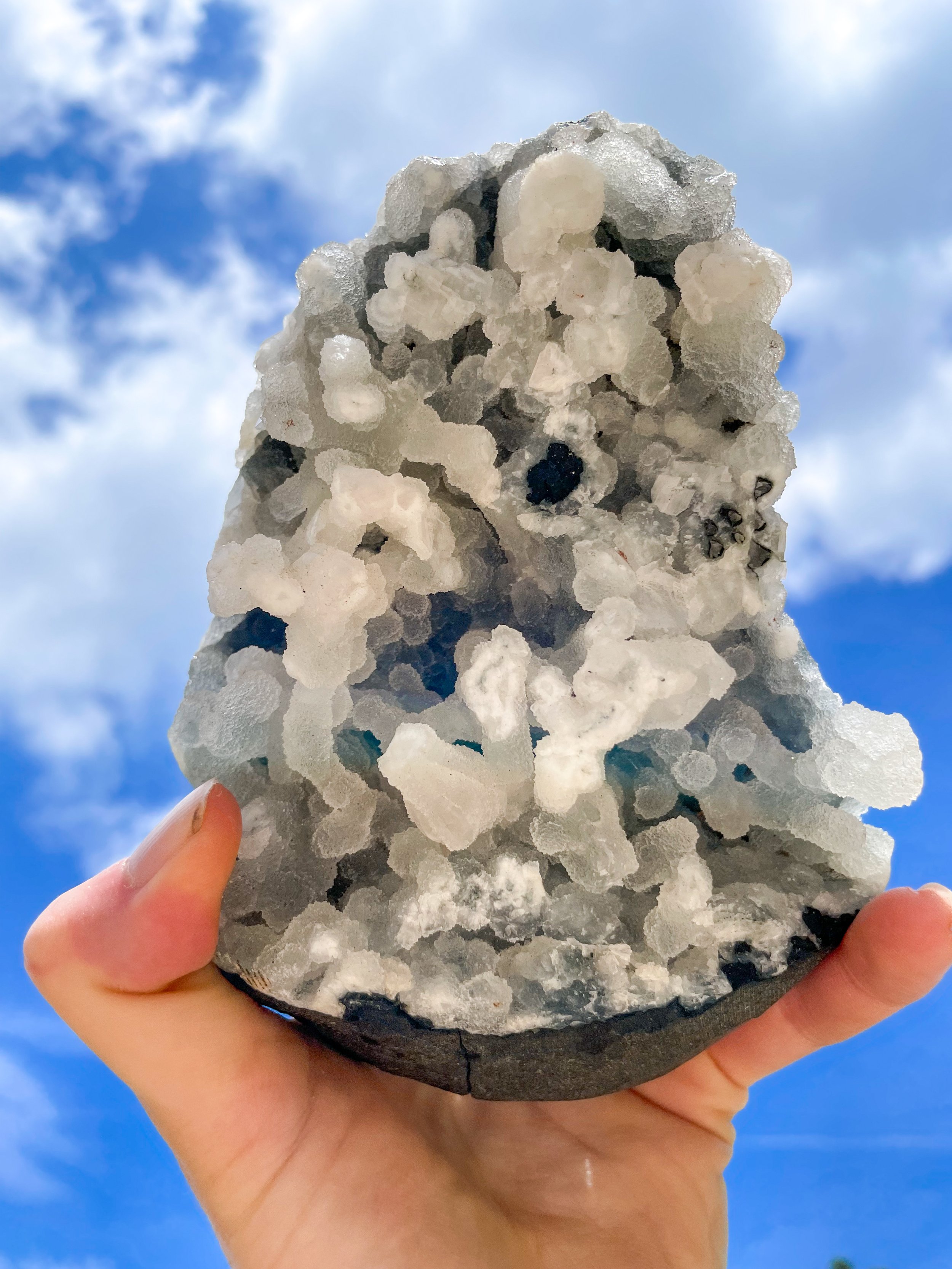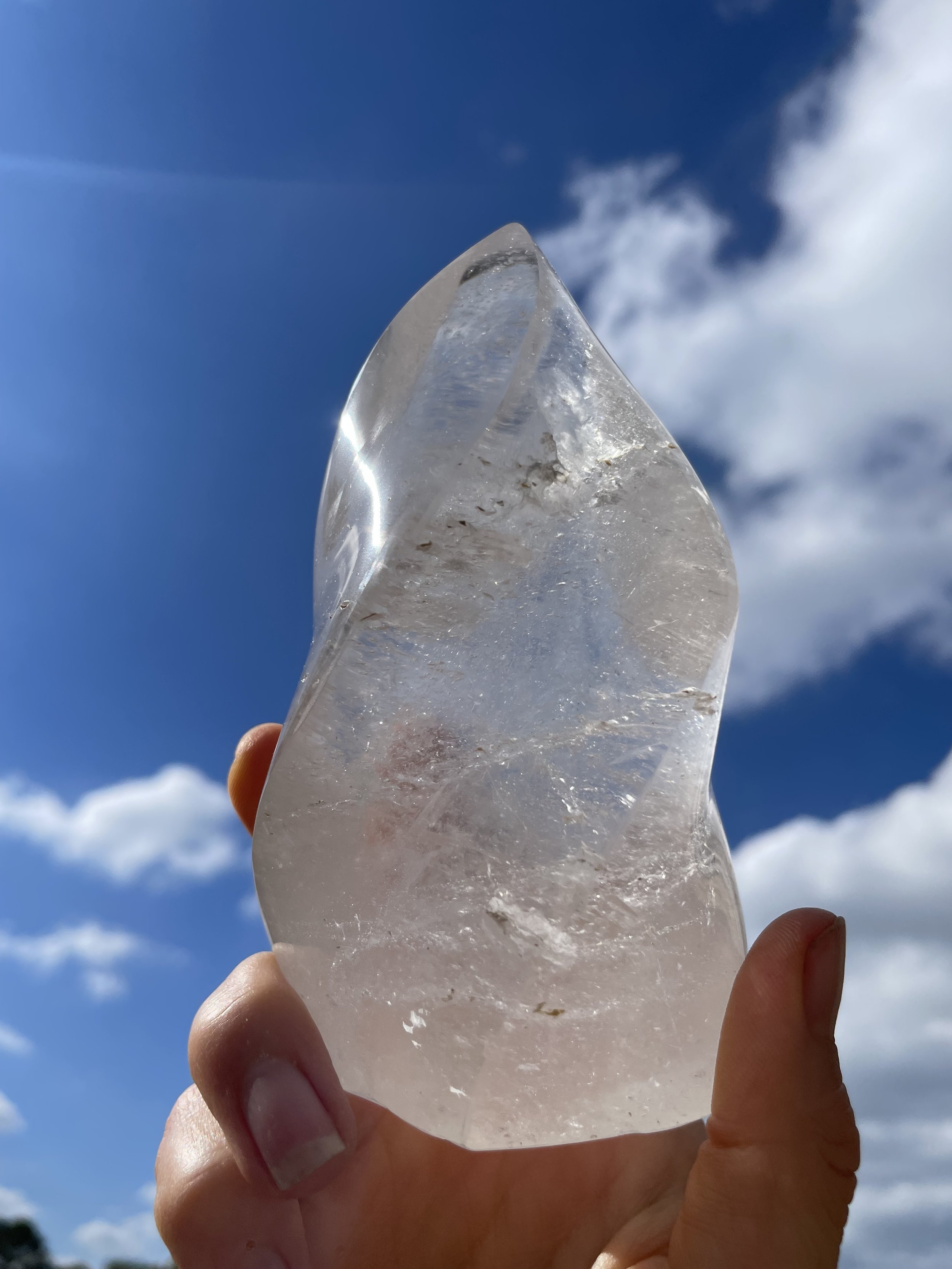 Image 1 of
Image 1 of


Black Chalcedony with Pyrite
Black Chalcedony with Pyrite
Black Chalcedony often forms in rhyolite, basalt, and andesite flows, where silica-rich solutions infiltrate gas bubbles or fractures in volcanic rocks.
Can also occur in marine sedimentary environments as nodules or concretions (similar to flint or chert).
The black coloration is due to inclusions of organic matter, iron oxides, manganese, carbon, or other dark mineral impurities.
These inclusions are dispersed microscopically through the quartz matrix, giving a uniform dark appearance.
Black Chalcedony with Pyrite
Black Chalcedony often forms in rhyolite, basalt, and andesite flows, where silica-rich solutions infiltrate gas bubbles or fractures in volcanic rocks.
Can also occur in marine sedimentary environments as nodules or concretions (similar to flint or chert).
The black coloration is due to inclusions of organic matter, iron oxides, manganese, carbon, or other dark mineral impurities.
These inclusions are dispersed microscopically through the quartz matrix, giving a uniform dark appearance.
Black Chalcedony with Pyrite
Black Chalcedony often forms in rhyolite, basalt, and andesite flows, where silica-rich solutions infiltrate gas bubbles or fractures in volcanic rocks.
Can also occur in marine sedimentary environments as nodules or concretions (similar to flint or chert).
The black coloration is due to inclusions of organic matter, iron oxides, manganese, carbon, or other dark mineral impurities.
These inclusions are dispersed microscopically through the quartz matrix, giving a uniform dark appearance.



